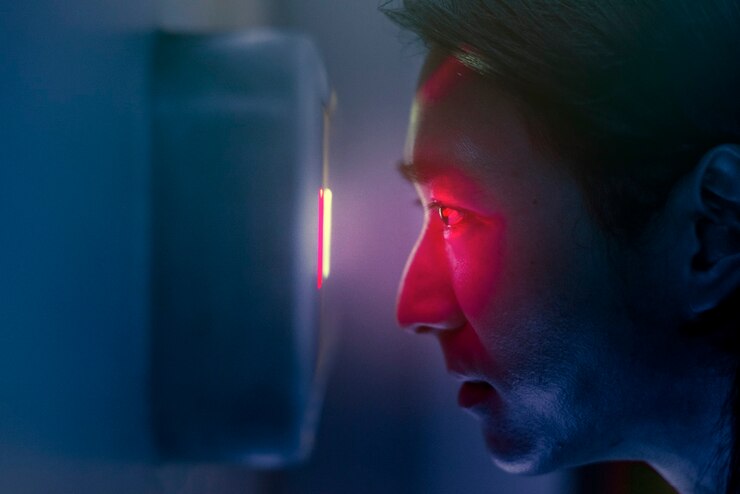The biggest problem in facial recognition is inaccuracies due to biases in the algorithms. Facial recognition technology struggles with accuracy for individuals with darker skin tones, leading to bias and potential discrimination.
Facial recognition technology has rapidly advanced in recent years, with widespread application in security, law enforcement, and consumer electronics. However, a critical issue affecting its reliability and fairness is the presence of biases in the algorithms. These biases often result in inaccuracies, especially for individuals with darker skin tones, leading to potential discrimination and violations of privacy.
Understanding and addressing these biases is essential for the ethical and equitable deployment of facial recognition technology. We will explore the challenges posed by biases in facial recognition and discuss potential solutions to mitigate these issues.
The Basics Of Facial Recognition Technology
Facial recognition technology is a rapidly advancing field with diverse applications, from unlocking smartphones to identifying criminals in CCTV footage. Understanding the basics of facial recognition technology is essential to comprehend the biggest problems associated with it. In this section, we’ll delve into what facial recognition technology is and how it works to gain a comprehensive understanding of its functioning.
What Is Facial Recognition Technology?
Facial recognition technology is a biometric software application that can uniquely identify or verify a person by analyzing and comparing patterns based on the person’s facial features. It involves capturing, analyzing, and comparing patterns to a database of known faces to confirm a person’s identity.
How Does Facial Recognition Work?
Facial recognition technology works by capturing facial patterns and then performing a series of steps to identify or verify a person. These steps include:
- Face Detection: The technology locates and detects human faces within an image or video frame.
- Face Capture: Once a face is detected, the technology captures the facial features and creates a digital template.
- Feature Analysis: The digital template is then analyzed to identify individual facial features such as the distance between the eyes, the shape of the nose, and the contours of the face.
- Comparison: The analyzed facial features are compared with a database of known faces to determine a match.
Ethical Concerns In Facial Recognition
The increasing prevalence of facial recognition technology has raised significant ethical concerns regarding its impact on privacy and the potential for bias and discrimination. As the use of facial recognition systems becomes more widespread, it is crucial to address these issues to ensure that technology is developed and used responsibly.
Privacy Issues With Facial Recognition
Facial recognition technology has sparked widespread concern about the invasion of privacy and the potential misuse of personal data. This technology has the capability to capture and analyze biometric data from individuals without their consent, raising serious questions about the protection of personal privacy. In addition, the storage and sharing of facial recognition data present the risk of unauthorized access and misuse, posing a significant threat to individual privacy rights.
Bias And Discrimination In Facial Recognition Systems
The inherent biases in facial recognition systems have been a growing concern, particularly in terms of accuracy and fairness. These systems have demonstrated higher error rates for certain demographic groups, such as women and people with darker skin tones, leading to the potential for discriminatory outcomes. The lack of diversity in the datasets used to train these systems can perpetuate bias, exacerbating social inequalities and further marginalizing already disadvantaged groups.
Challenges In Facial Recognition
Facial recognition technology has seen significant advancements in recent years, revolutionizing various industries including security, marketing, and healthcare. However, it’s not without its challenges. The accuracy and reliability of facial recognition, as well as the difficulty in identifying certain demographics, are key obstacles that need to be addressed for the widespread adoption of this technology. Let’s delve into the challenges in facial recognition:
Accuracy And Reliability Of Facial Recognition
One of the prominent challenges in facial recognition technology is ensuring accuracy and reliability. While significant progress has been made in this area, there are still limitations, particularly in low-light conditions or when dealing with partial views of a face. False positives and false negatives remain a concern, highlighting the need for continued refinement and improvement of algorithms to enhance the precision and trustworthiness of facial recognition systems.
Difficulty In Identifying Certain Demographics
The difficulty in accurately identifying certain demographics, such as gender, age, or ethnicities, poses a significant challenge. Factors such as variation in facial features and expressions can impact the effectiveness of facial recognition technologies, leading to potential biases and inaccuracies. Addressing these challenges requires the implementation of more comprehensive and diverse datasets, as well as the development of algorithms that are sensitive to the nuances of different groups.
Legal Implications Of Facial Recognition
The legal implications of facial recognition technology have sparked considerable debate and concern among policymakers, advocates, and the public. As this technology becomes increasingly prevalent, its potential for misuse and infringement on privacy has led to growing calls for regulation and legislation to address these critical issues.
Regulation And Legislation Surrounding Facial Recognition
Several countries and jurisdictions are considering or have already implemented regulations relating to the use of facial recognition technology. The European Union, for example, has proposed comprehensive regulations to govern the ethical and legal use of artificial intelligence and facial recognition. The regulations aim to protect fundamental rights and freedoms while promoting innovation and competitiveness.
Similarly, the United States has seen a push for legislation to regulate facial recognition technology. Some states have passed or proposed laws that require government agencies to obtain a warrant before using facial recognition for surveillance purposes, and limitations on the use of this technology in public spaces are being considered.
Cases Of Misuse And Abuse Of Facial Recognition Data
Instances of misuse and abuse of facial recognition data have raised alarms about the potential risks and invasions of privacy associated with this technology. Unauthorized access, data breaches, and bias in facial recognition algorithms have led to serious concerns about the ethical and legal implications of its usage.
Some notable cases of misuse involve the improper collection and storage of facial recognition data by commercial entities, often without proper consent or transparency regarding its use. Additionally, reports of law enforcement agencies using facial recognition in a manner that infringes upon civil liberties have brought attention to the need for strict regulations to safeguard against potential abuses.
Future Of Facial Recognition
As technology continues to advance rapidly, the future of facial recognition is a topic of significant discussion and debate. The potential applications and implications of this technology are vast, and it raises important questions about ethical and legal considerations. Additionally, advancements in facial recognition technology are continuously shaping the future landscape of this groundbreaking innovation.
Advancements In Facial Recognition Technology
The evolution of facial recognition technology is marked by significant advancements that have improved accuracy, speed, and functionality. These enhancements include:
- Implementation of deep learning algorithms to enhance facial feature recognition
- Integration of 3D facial recognition for improved depth perception
- Development of real-time facial recognition systems for instantaneous identification
Ethical And Legal Considerations For The Future
As facial recognition technology progresses, ethical and legal concerns become increasingly prominent. It is essential to address the following considerations:
- Privacy and data protection safeguards to prevent misuse of facial recognition data
- Regulatory frameworks to ensure responsible and transparent use of facial recognition technology
- Ethical guidelines for the use of facial recognition in surveillance and security applications

Credit: www.pcmag.com
Frequently Asked Questions On What Is The Biggest Problem In Facial Recognition?
What Is The Controversy With Facial Recognition?
The controversy with facial recognition stems from privacy concerns and potential biases in identification. Critics argue that it can infringe on civil liberties and perpetuate discrimination. Additionally, there are issues with accuracy and consent in its use. These factors have sparked debates and calls for regulation.
When Facial Recognition Goes Wrong?
Facial recognition can go wrong due to lighting issues, obscured faces, or low-quality images. Inaccuracies may also occur with lookalike individuals or algorithm biases. Regular updates and diversity training for the algorithm can help mitigate these errors.
Why Doesn T Facial Recognition Work?
Facial recognition may not work due to poor lighting, low-quality images, or algorithm bias. These factors can affect accurate identification.
What Are The Vulnerabilities Of Facial Recognition?
Facial recognition vulnerabilities include potential false matches, privacy invasion, and security breaches. Hackers can exploit the technology. It also raises concerns about data misuse and discrimination. Constant updates and ethical use are crucial for addressing these issues.
Conclusion
While facial recognition technology has made great strides, it still faces significant challenges. Privacy concerns, potential bias, and security vulnerabilities are key issues that need to be addressed. Despite its potential, the industry must work to ensure that facial recognition technology is reliable, ethical, and inclusive for all.

